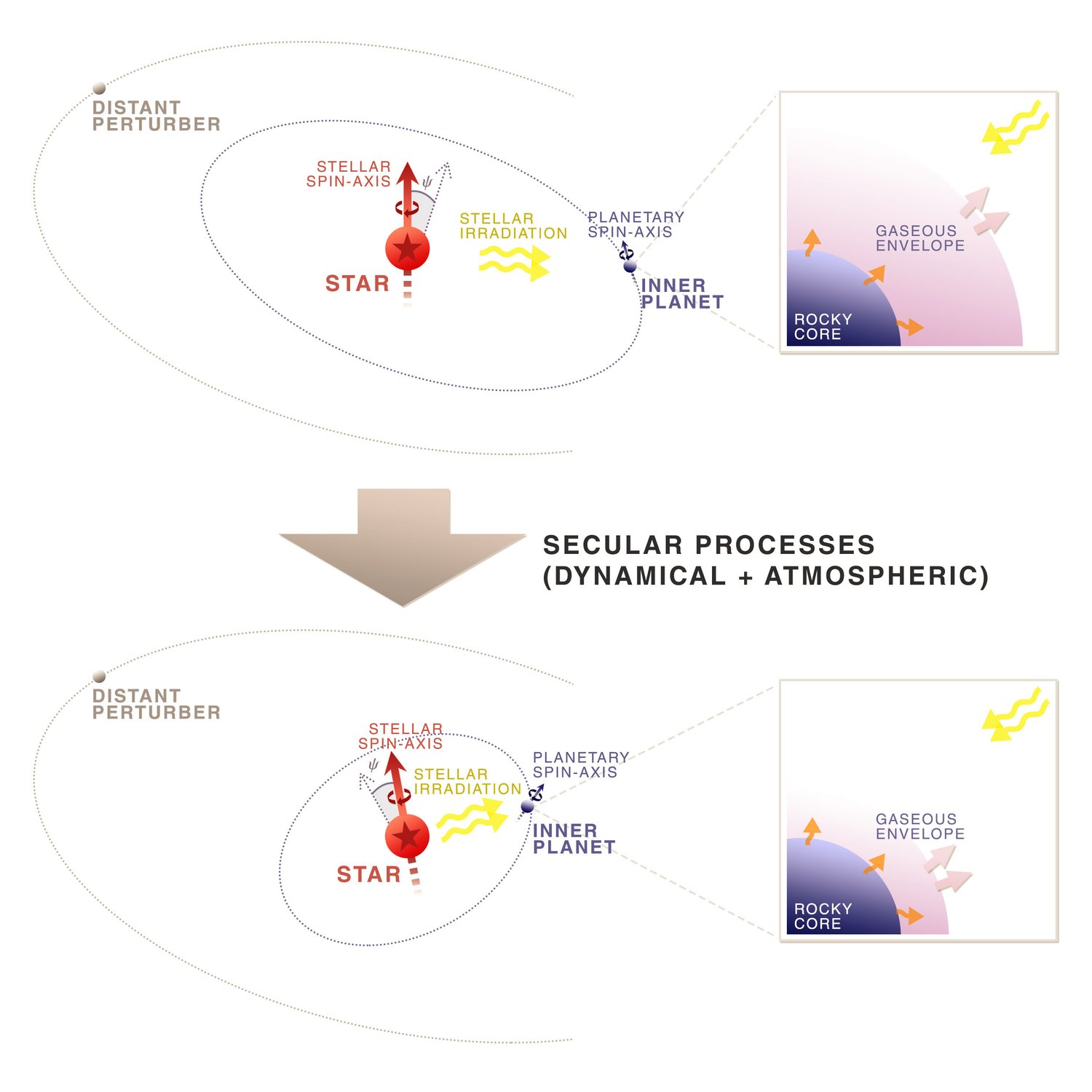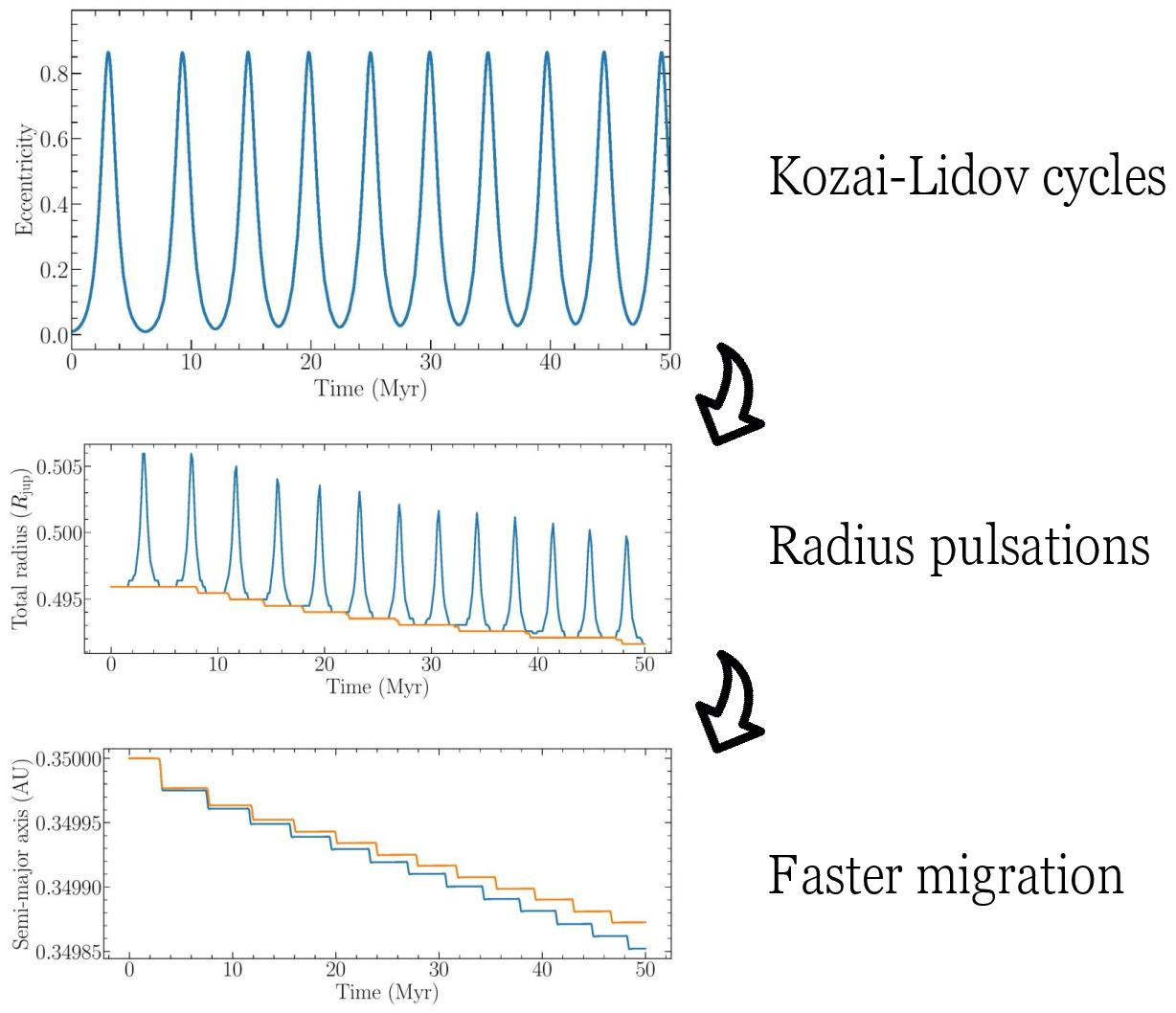Coupling the Atmospheric and Dynamical Evolution of Close-in Exoplanets
- University of Geneva, Astronomical Observatory, Switzerland (omar.attia@unige.ch)
The vast majority of the detected exoplanets orbit in less than a month around their star, in extreme conditions unmet in the Solar System. The demographics of these close-in planets exhibit a striking feature: the lack of Neptune-size worlds on very short orbits, also dubbed the "Neptunian desert", which challenges our understanding of planetary formation and evolution. Two classes of mechanisms thought to play a predominant role in shaping the desert are orbital migration, which brings such planets close to their star, and atmospheric escape under the resulting increased irradiation. Yet, their relative roles remain poorly assessed, in part because we lack numerical models that couple the two processes with high precision and on secular timescales.
To address this need, we developed a state-of-the-art model, the JADE code, which allows to self-consistently simulate the complete lifetime of a planet around its host star. On the dynamical side, the most impactful processes for close-in planets are implemented. The three-dimensional evolution of the orbit is modeled under stellar and planetary tidal forces, a relativistic correction, and the action of a distant perturbing body. On the atmospheric side, the vertical structure of the atmosphere is integrated over time based on its thermodynamical properties, composition, inner heating, and the evolving stellar irradiation, which results, in particular, in high-energy-induced photo-evaporation.
We bench-marked the JADE code on the intriguing case of GJ436 b, an evaporating Neptune at the fringes of the desert whose eccentric and misaligned orbit despite an advanced age is still a puzzle. We showed that its exciting properties can be naturally explained by a strong interplay between eventful orbital and atmospheric histories. Particularly, a hidden companion on a wide orbit is able to trigger a Kozai—Lidov resonance, trapping the inner planet in high-eccentricity cycles for secular periods of time. During this resonance phase, the atmosphere pulsates in tune with the Kozai—Lidov cycles, which leads to stronger tides and an earlier migration than predicted from pure dynamical simulations. Nonetheless, the planet still starts to evaporate upon migrating billions of years after its formation, refining the paradigm that mass loss is dominant in the early age of close-in planets.
Precise measurements of orbital and atmospheric tracers are crucial to constrain our models. Our joined approach to the understanding of past dynamical and atmospheric history, combined with the servicing of next-generation instruments, offers the best chance to shed light on the origins of the desert and the processes that forge the close-in planet population.
Article:
“The JADE code: Coupling secular exoplanetary dynamics and photo-evaporation”
O. Attia, V. Bourrier, P. Eggenberger, C. Mordasini, H. Beust, D. Ehrenreich
March 2021
Astronomy & Astrophysics, Volume 647, id.A40
DOI: 10.1051/0004-6361/202039452

Figure 1: Illustration of how the JADE code works. The evolution of the inner planet’s orbit as well as its atmospheric structure is monitored. The figure depicts the configuration of the system at two different secular time steps. It illustrates a typical case where the inner orbit shrank, circularized, and changed inclination, and where the envelope substantially eroded.

Figure 2: Possible interplay between secular dynamics and atmospheric evolution of GJ436 b, as unveiled by the JADE code. Top: a Kozai—Lidov resonance induced by a distant perturber generates large eccentricity oscillations. Middle: the periodic rise in eccentricity translates into shorter mean planet–star distance and higher stellar irradiation. This causes the atmosphere to heat up and pulsate in tune with Kozai—Lidov cycles (blue), as opposed to the case where this dynamical feedback is not taken into account (orange). Bottom: the increases in radius lead to stronger tidal effects and thus a faster migration (blue), as compared to the case where the atmosphere is not modeled (orange).
How to cite: Attia, O. and Bourrier, V.: Coupling the Atmospheric and Dynamical Evolution of Close-in Exoplanets, European Planetary Science Congress 2021, online, 13–24 Sep 2021, EPSC2021-575, https://doi.org/10.5194/epsc2021-575, 2021.

